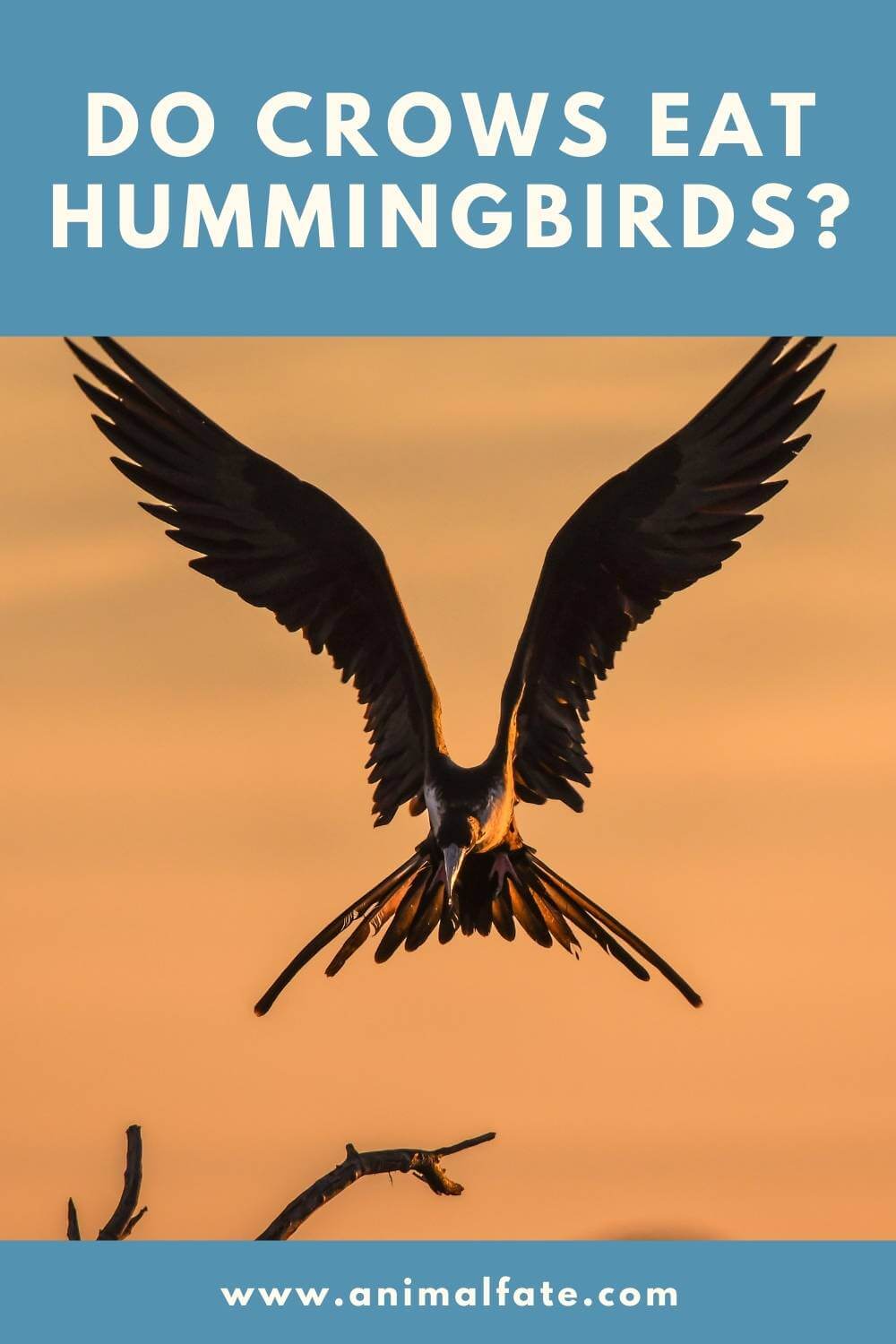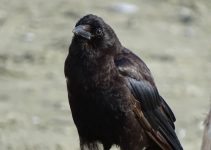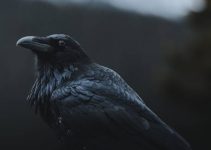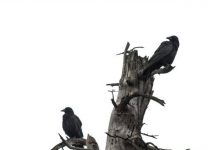Crows eat hummingbirds, yes. Baby hummingbirds are typical prey for birds because it’s easy to hunt them. Actually, crows are infamous for eating hummingbirds and their eggs. But they are not the only animal that is dangerous for hummingbirds. Blue Jays, Roadrunners, Chipmunks, or snakes also eat them.
Let’s get into these two birds more!
Contents
Hummingbirds as prey to crows
Hummingbirds are easy prey to a lot of predators around. The reason is that they are tiny, and they have no strength to fight back if pursued.
Both young and adult birds of such kind may be quite fascinating in the eyes of humans.
Their size and their appearance make people want to hang a bird feeder near outside their homes.
However, both can be quite a tasty snack and treat in the eyes of any animal predators.
These birds rely on their speed when it comes to their response to a predator pursuit.
Still, for predators, they can double their speed to catch any hummingbird around.
As a result, if it comes to a chase, these birds usually lose their lives.
In the case of crows, a chase doesn’t usually happen. And the reason is that crows attacks directly – into the nest.
As intelligent birds, these corvids may have the speed, but they use their wit to hunt.
Crows are opportunistic hunters, and they need not search outside their area. A crow may see a hummingbird flying, but if it goes out of their sight, it’ll leave it.
As a result, the usual crow eating hummingbird scenario happens in the nest.
These corvids attack nests more than they chase other birds in flight.
Thus, if they see any hummingbird nest with eggs or nestlings in it, that’s what they’ll target.
The question now is how to protect such nests.
Related – What about chocolate? Can crows eat chocolate?
How do you protect a hummingbird nest from crows?
If you love hummingbirds like me, you would also want to protect their nest from crows.
Since hummingbirds usually nest on sheltered trees or shrubs, it’s not a surprise if you find one near you.
If there’s a nest you want to protect from crows, you can use a four-inch mesh.
A four-inch mesh should be enough to keep the nest out of reach for crows. At the same time, it will allow the hummingbirds to slip through.
Since hummingbirds are small, they can easily fit through nets. Thus, their nest should be kept out of a crow’s reach.
You can also do to secure the nest by placing one at the base of a shrub or the trunk.
Doing so will secure the nest from crows entering below.
You can always scare the crows away every time they came. The only problem with such a thing is that it can also keep the hummingbirds away.
Since hummingbirds are tiny little birds, they may also flee together with the crows.
For further information on how to keep crows away, read more on this article.
Are hummingbirds afraid of other birds?
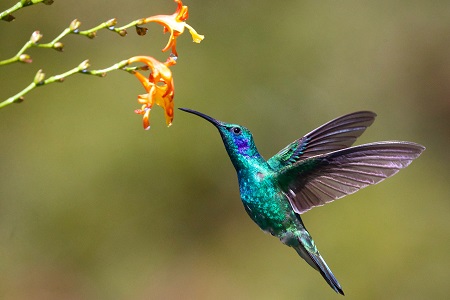
Hummingbirds may be quite aggressive and territorial. They are likely to defend their feeding areas.
However, despite such personalities, they can still be afraid of larger birds.
Thus, at some point, they can be quite aggressive in the face of predators.
Still, they try to see their way out in case such predators went on pursuing them.
Further, they may be aggressive to birds of their size. However, enormous birds such as hawks, owls, and crows, would likely flee immediately.
Aside from other birds, hummingbirds are also afraid of other insects.
Thus, the insects who also feed on nectars the same way these birds do will likely scare them away.
Still, despite their easy-to-scare attitude, they have protective measures to defend themselves.
Related – Can crows eat bread?
How do hummingbirds protect themselves from predators?
Below are the things hummingbirds do to protect themselves from predators.
They have tiny nests
A typical hummingbird nest comes about half the size of a walnut. The reason is that these birds don’t need a larger one because their eggs can fit into it.
With the small size, they can easily hide their nest from predators. These nests also blend well in the surroundings, such as native twigs and leaves.
The females stay while the male goes away
Male hummingbirds have bright colors, and they can get spotted easily. Thus, they tend to stay away from nests to avoid getting caught.
Their female counterparts are the ones that stay since they don’t have bright colors. Such an appearance makes them unnoticeable to predators.
Since they blend with their surroundings, they can protect their nests with ease.
They can be quite fast
These birds have an average flight of 25-30mph. Since they are tiny, they can easily maneuver in the air.
Although their predators are faster, they can sometimes escape because of their agility.
Hummingbirds can dive and maneuver
These tiny birds have well-developed flight reflexes. They can fly in any direction fast and immediately change whenever they need to.
What’s surprising is that they can fly upside down and can dive in the speed of 60 mph. With such capabilities, they can escape from predators with ease.
They have noisy wings
While their wings’ humming sound may be a delight for us, it can confuse their predators.
If a predator hears that hum, it will attempt to search for its source in other directions.
As a result, hummingbirds get the chance to escape from them.
Do you want to know if crows eat nuts and seeds, spiders, or corn? Check it out!
What birds prey on hummingbirds?
Aside from crows, other birds hunt and feed on hummingbirds. Among these birds are hawks (although such tiny birds shouldn’t even fill their stomach).
The rest of the birds usually goes for the eggs. Among these are the bluejays and roadrunners, since they are small enough to seek the nests.
Other animals prey on hummingbird nests as well. The list includes squirrels, lizards, snakes, chipmunks, frogs, and even fishes.
Summary
Crows do eat hummingbirds, given the opportunity. As intelligent creatures, they would likely hunt a hummingbird if they see any chance.
As a result, most hummingbird hunting activities of crows ends up in the nest and not in an actual chase.
If you wish to protect these tiny little birds, you can help the protective measures they do.
Resources
Image credits – Photos by Chris Sabor and James Wainscoat on Unsplash
